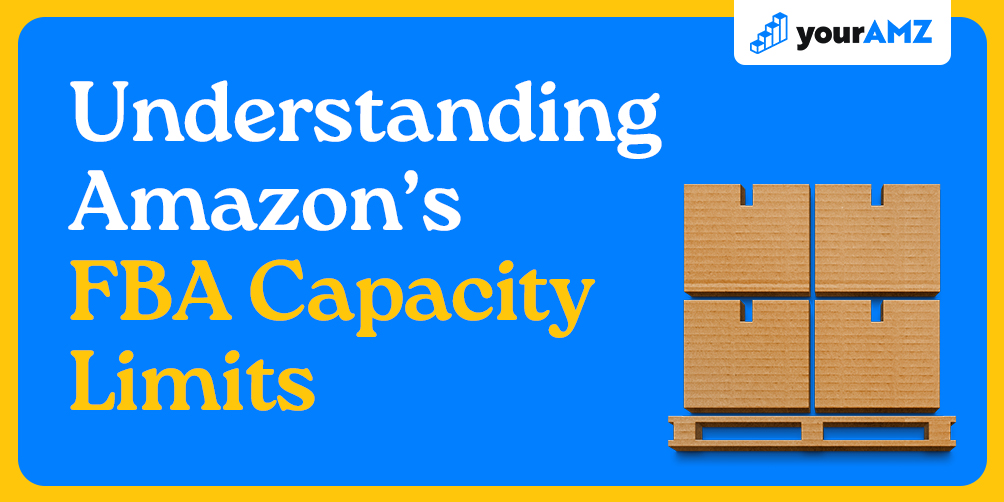Understanding FBA Returns

Regardless of what products you are selling on Amazon, all sellers face the challenge of handling customer returns. Receiving a return from a customer can be discouraging, not only due to the loss of a sale but also customer’s unsatisfaction with your product. Amazon FBA has one of the highest return rates in all of e-commerce partly due to Amazon’s very lenient and very customer-friendly terms to shoppers.
Amazon operates by its own customer return policy when determining if the item is eligible for a return. As a seller, you have no control over whether a product is accepted as a return, regardless of whether it is the buyers’ fault that the product is damaged or defective.
How Returns Work
Typically, customers are allowed to request returns within 30 days of receiving their order (Amazon can make exceptions and accept returns after this time frame in some cases). After a buyer requests a return and sends back the item, Amazon will notify the seller via email, informing them of the return and deducting the cost of the order from the seller’s account balance.
Once Amazon receives the returned item, they will then mark the item depending on its condition:
- Sellable - Returned items in this category are still in good condition. Amazon will return these items into your active inventory so that you can resell them to other customers.
- Damaged - Items or products that are labeled damaged won’t be re-sold. However, you may receive reimbursement from Amazon if the company is responsible for the damage
- Customer Damaged - In this context, customer damage is when a buyer returns a product in less than new condition after opening it and it can no longer be sold as “new”
- Carrier Damaged - Carrier damaged products are those products that Amazon’s selected carriers (UPS, FedEx, USPS) failed to take care of while in transit. As a result, they got damaged.
- Defective - These are returned items that are not functioning properly or defective. Whenever a customer receives a defective product, they are entitled to a refund. The product will be considered unsellable
- Expired – These Items reaching expiry date, unfit for sale
If a customer fails to return an item within the time period, the customer will be charged and you will receive a reimbursement.
Reasons Why a Customer Returns an Item
When an Amazon customer submits a request to return their order, they must choose a reason for the return. This will determine who’s responsible for the return shipping costs—the customer or the seller.
Amazon lists 72 different official reasons for a customer return, which can be found here. Generally speaking, customers are responsible for reasons related to preference, ordering the wrong size, or changing their mind about wanting the product. Sellers are deemed responsible if the customer cites functionality or damage-related reasons like “damaged due to poor packaging ” or “missing parts or accessories.” The following is a list of customer return reasons used by Amazon to process FBA returns. These reasons will show up on FBA Return reports:
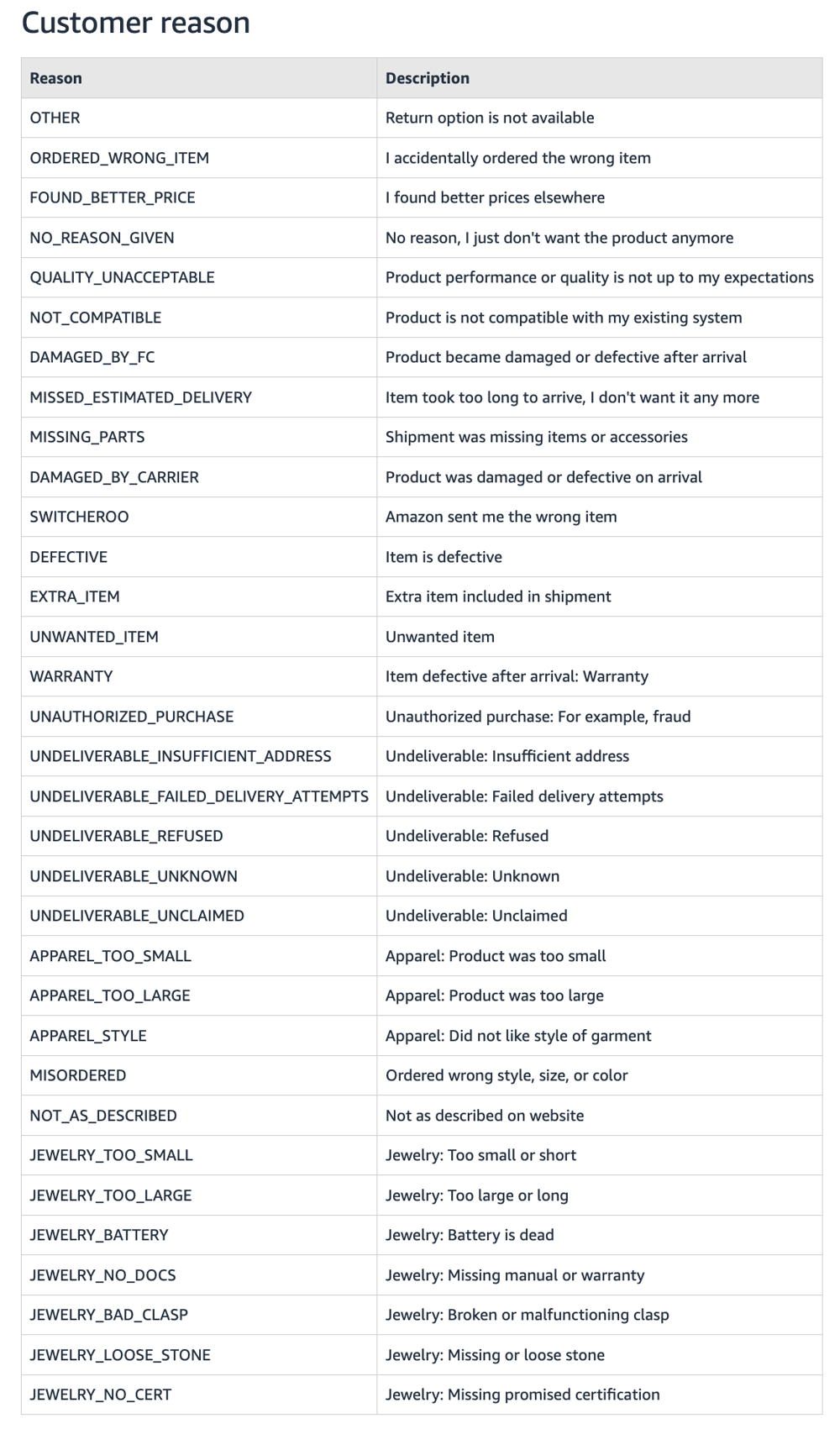
View this chart on Amazon by clicking here.
FBA Returns Processing Fee
As of June 1st, 2024, Amazon has started to charge a returns processing fee for all products (except apparel and shoes) with a high return rate by category, to address the operational costs of returns and to reduce waste. The fee will only apply to products that have return rates above a threshold specific to each product’s fee category. The fee applied per unit is based on the product’s size tier and shipping weight, as per the rates shared below.
A product’s return rate will be the percent of your product’s shipped units in a given month that’s returned by customers over that month and the subsequent two calendar months. For a given month’s shipped units, the returns processing fee will be charged for each returned unit above the product category’s return rate threshold. For a particular month’s returns, the return processing fee charge will be made between the 7th to 15th day of the third subsequent month. A product is exempt from this fee if it shipped fewer than 25 units in a month.

Return Rate per Category:


Here are the Return Fee Rates depending on the product size tier:
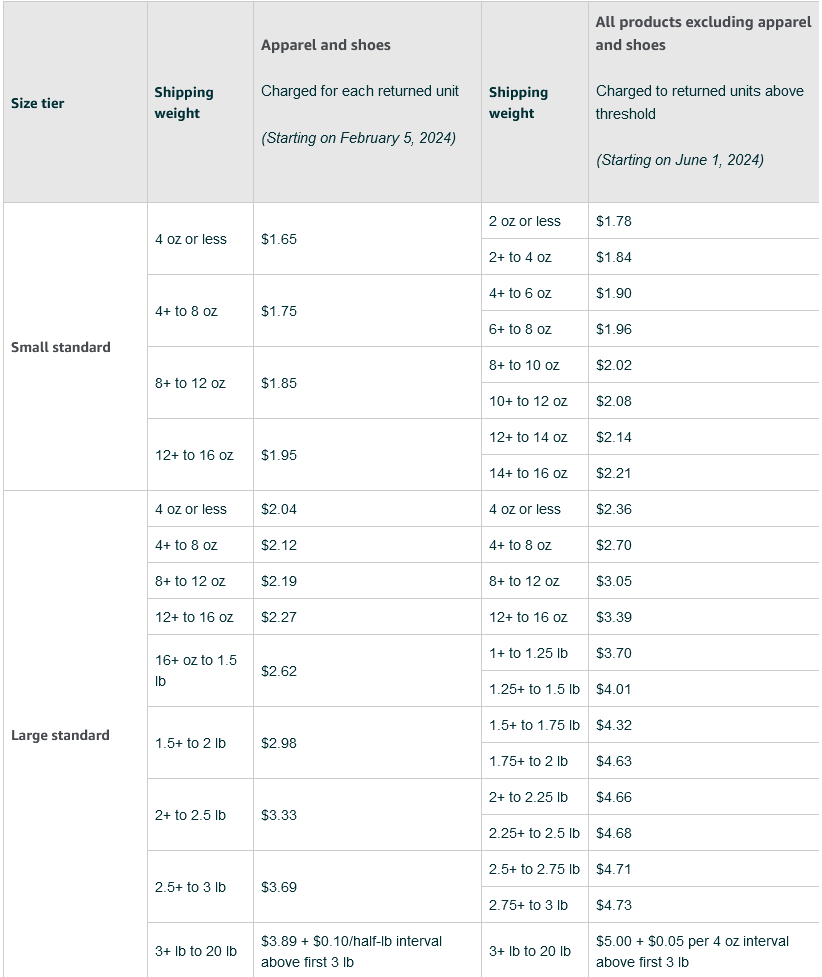

Understanding your Returns
Amazon released a new way for sellers to get insights into their returns via Seller Central via the FBA Returns page. This new tool allows sellers to view trends by Return Rate % or Returned Units, and filter by Timeframe (30/60/180 days/last year) and the Product Category. It also breaks down data for each ASIN, including the top return reason. Using this tool will help you see which ASINs are getting returned the most along with the top return reason. This information can help sellers improve their listing content and even the product quality.
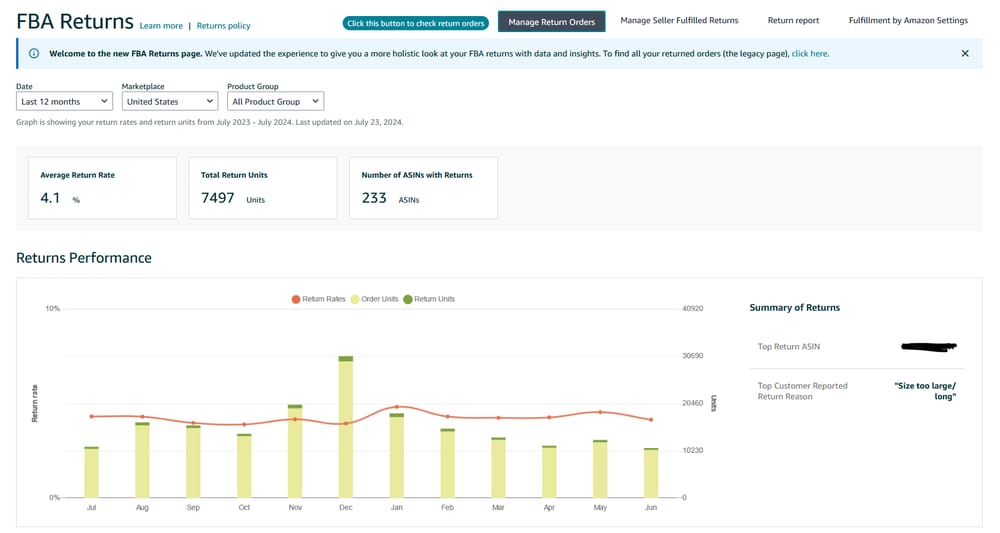

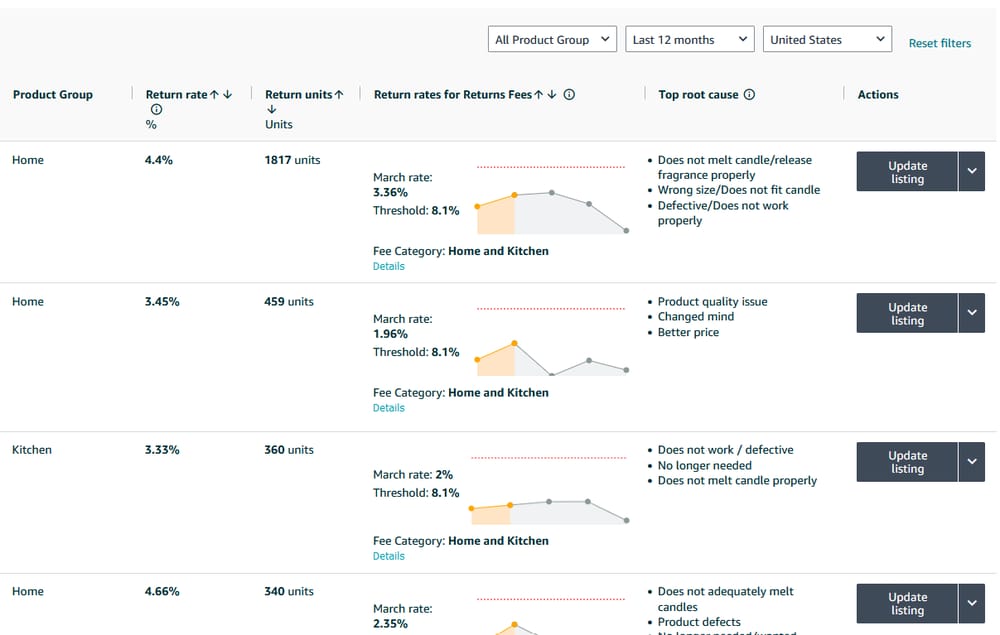
Ways to Limit Returns
Below are a few ways to help limit customer returns.
Accurate Product Description
Make sure your product listing has enough details in order for the customer to confidently know what they are purchasing and to set the right expectations. Try to include the following details:
- Materials description
- Manufacturing location
- Warranty information
- Satisfaction guarantee and return policy
- Answers to FAQs
- Product instructions for use (if applicable)
- Exact product dimensions
- Weight of product
- Size and color choices
Include High-Quality Images, Videos, and A+ Content
You should provide multiple photos showing your product at different angles and a video showcasing the use of the product (if possible). This will help the customer understand how to use the product correctly to see if it fits their needs.
Include a Size Chart
Provide your customers with a sizing guide if you sell shoes, clothing, accessories, or any other product that varies in size and measurement.
Conclusion
In the end, FBA returns are part of the business of selling on the Amazon and it is impossible to eliminate them. Instead, focus on what you can do to make the listing and product match each other and the expectations, as well as keeping track of the reasons why a buyer is returning the product.
Unlock Your Amazon Potential
%20(1).avif)

.png)

.png)
